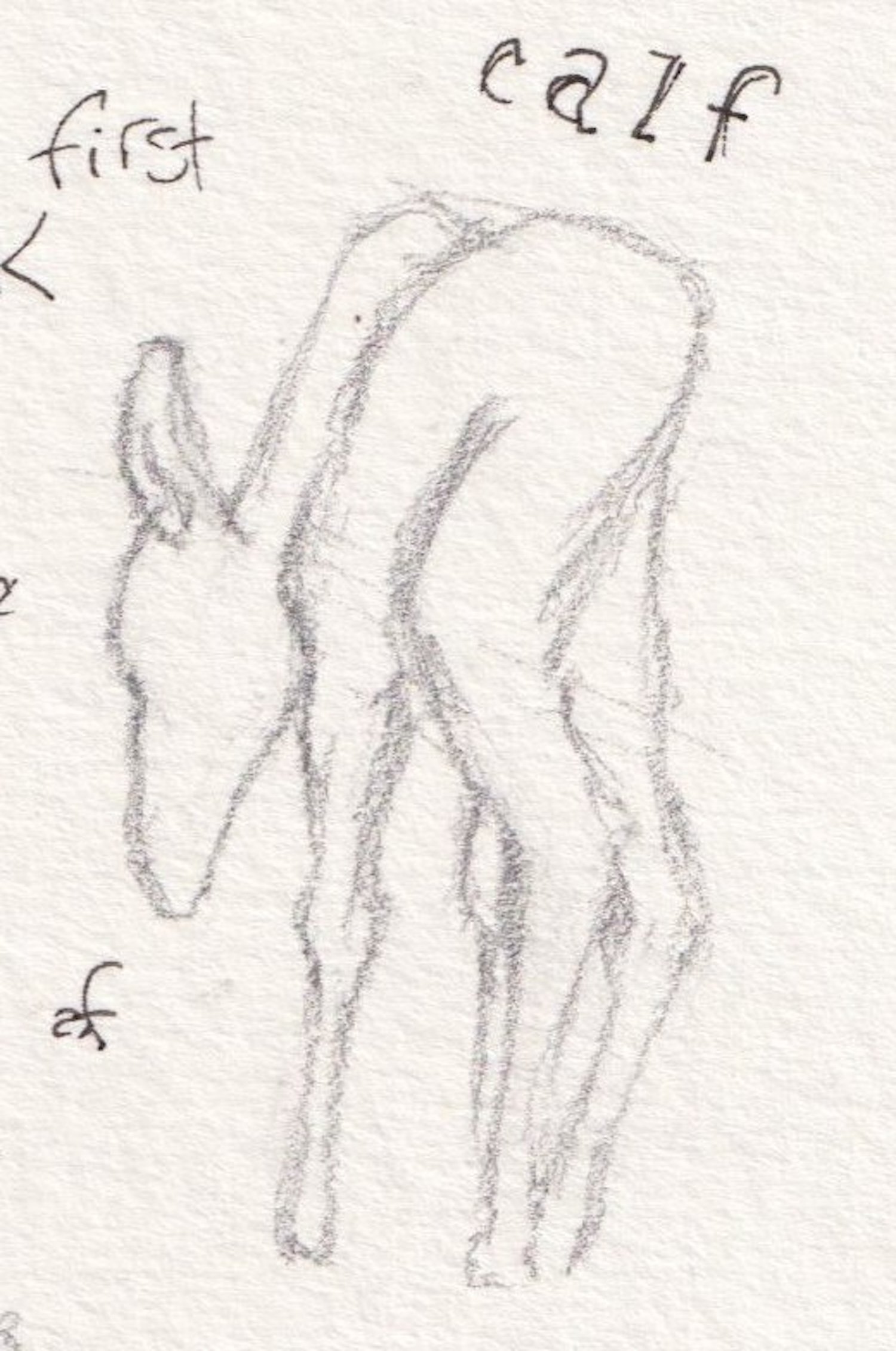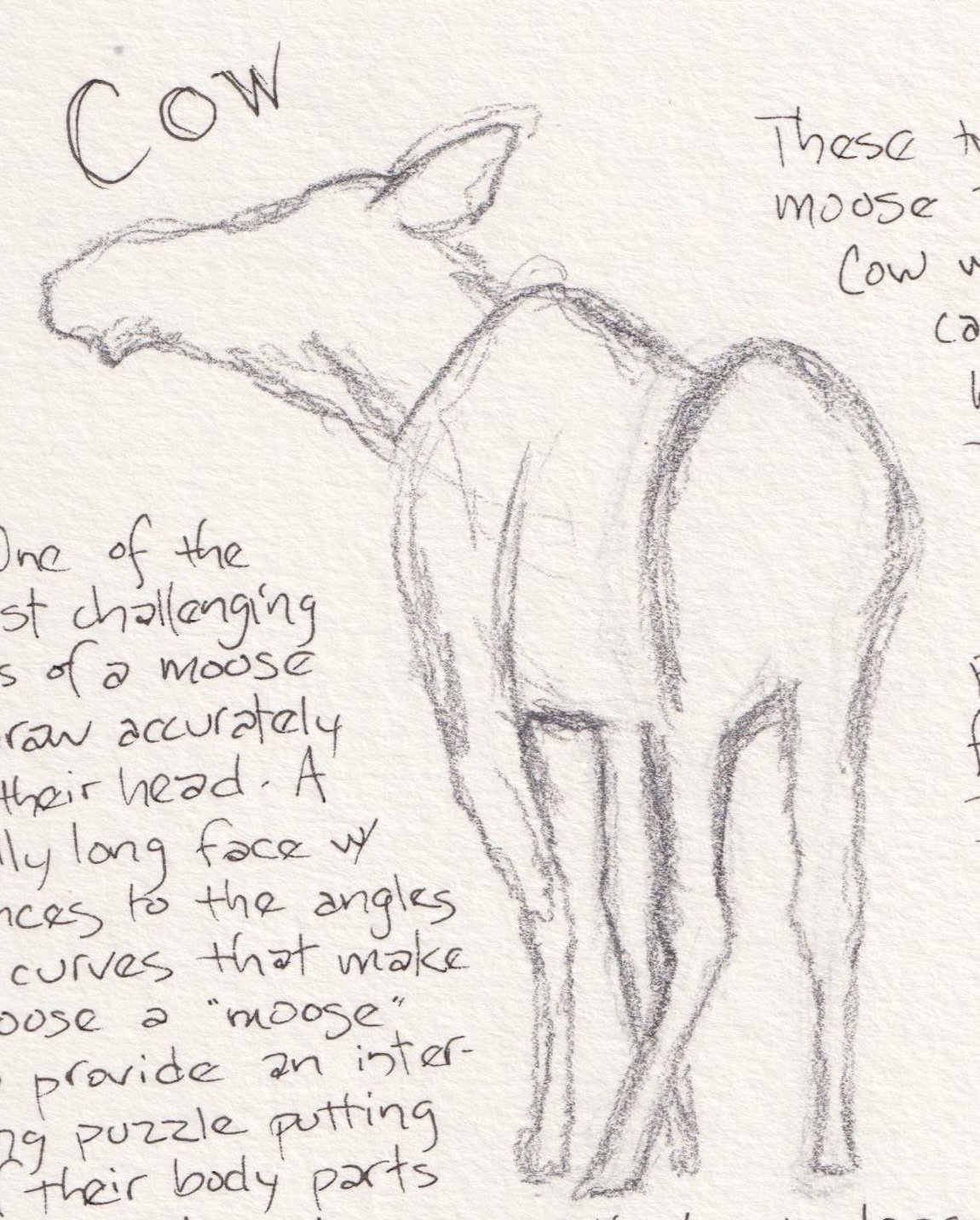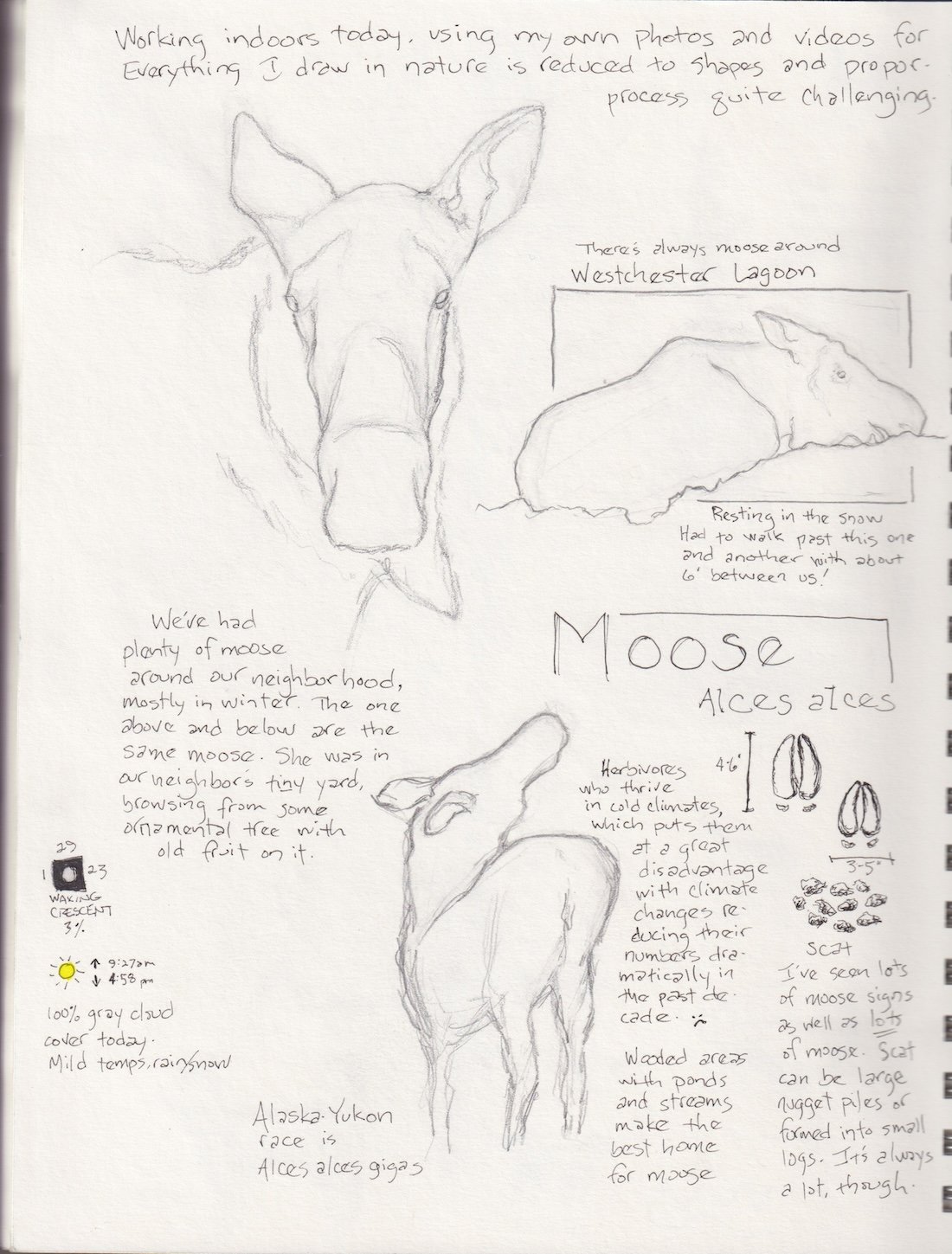Time to Tackle A Moose!
Reposted from my January 2023 newsletter, edited for this platform.
January was a very moosie month around here. Three hands are needed to count all the moose I saw this month alone. I took that as a sign it was time to tackle a moose.
Moose drawing, that is.
Moose forms are wonky. Don't get me wrong. I love moose for all their shape and proportion nuances. By wonky I mean weird. Maybe curious is a kinder word.
Specifically, their really long faces and ridiculously lanky legs make them dreadfully intimidating to draw! My brain "sees" this awkward form, but struggles to translate it onto paper.
Intimidation doesn't typically stop me, though. Delay me? YES.
Which is why they have not been given much attention in my field journal yet.
Many of my moose encounters have happened when my field journal isn't with me; while walking, running, skiing, cycling, or driving.
When spotted from the driver's seat, there never seems to be a safe spot to quickly pull off the road to sketch it.
With those constant challenges, the next best thing is working from photographic and video resources.
The more I study a subject from photographic resources, the deeper my understanding of the shapes, proportions, and form, improving my skills for drawing from life in the field.
You can see from the many lines, those visible and those erased, that getting a moose form is tough.
My initial lines attempt to lay down angles of various body parts and basic shapes... what I always tell my students to do first.
Contrary to common belief... rather than a sign of one's lack of skill, an eraser is a good friend when trying to render a subject with accuracy.
I work with graphite in one hand and an eraser in the other; it's a give-and-take procedure, constantly refining the nuances that make moose a moose and not a camel or a goat or some other ungulate.
This is a very different procedure from working on animals in the field, where I'm usually trying to capture subjects going about their daily lives, flitting around and repositioning. Dealing with that requires a different set of skills.
As the largest member of the deer family, moose (Alces alces) weigh between 800lbs-1000lbs, standing 6'-7' tall. Have you seen one up close? Imposing creatures, indeed.





Limited to cold climates, all northern parts of the globe have moose populations. Alaska's moose population is estimated to be between 175,000-200,000 and is currently considered stable.
They are EVERYWHERE here. Sidewalks, backyards, alleys, all the parks; and, of course, in all the wild places you expect: wooded forests with streams and ponds.
Sometimes it feels like I'm in a video game trying to get from point A to point B with a moose popping up anywhere at anytime, redirecting my path.
That is not so much the case back home. Nowhere are they suffering more and dwindling faster than in the state of New Hampshire.
Climate change and habitat loss are causing a number of challenges for moose including overheating, ticks, and brain worm.
New Hampshire's statewide population has dropped by about 40% in recent years from a peak of 7000-8000 in the 1990's to about 4000 now.
Although they are not considered to be disappearing from the state, that statistic has the attention of wildlife biologists.
From my accumulating collection of photos, I'll continue training my brain on the shape of a moose, a subject of endless wonder and wide-eyed joy.
No doubt, a moment will present itself when my field journal is with me and a moose wanders into my view.
I'll be ready.


